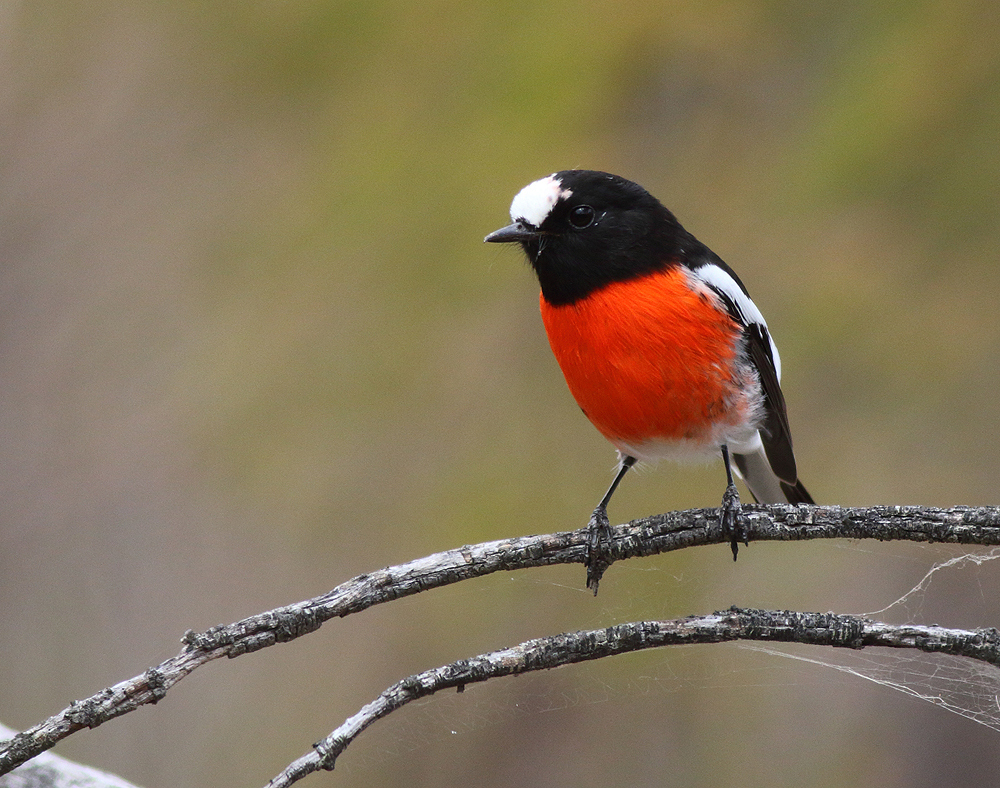Ruby gives voice to sapphire – Scarlet Robins in Nature News August 4 2017
Posted on 13 September, 2017 by Tanya Loos
For this month’s Nature News, Connecting Country Landcare Facilitator, Asha Bannon shares her observations of Scarlet Robins in Campbells Creek.
“A flash of wing on a blue sky
A breast of delicate wildfire
The weight of day is carried away
As ruby gives voice to sapphire”
The opening words of Michael Kennedy’s song, “Scarlet Robin” beautifully sum up the joy of this bird. It’s a rare occasion that I’ll go out into the bush in spring without hearing the Scarlet Robin’s gentle “chee-dalee-dalee” call, a crucial part of a Box Ironbark soundscape. The male’s bright red breast can also give them away as they move through the bush, but you may need to look a little closer to spot his more camouflaged girlfriend.
Scarlet Robins are one of many woodland birds that depend on ground-level habitat to feed. Perching on a low branch or piece of fallen timber, they use this vantage point to spot insects on the ground below. They then swoop down to catch their prey, and return to the perch to gobble it up.
Observing these beautiful birds is a highlight of any walk in the bush for me. They are one of those birds that watches you as you watch it, creating a sense of mutual wonder. Both males and females are gorgeous in their own way. They will pair up for the year with their mate, never straying too far, seemingly connected by an invisible string as they move through the trees at eye-level.
I’ve seen Scarlet Robins twice at our place in Campbells Creek, which is just beside a tributary that leads into the creek itself. One was also seen at Connecting Country’s Campbells Creek monitoring site during a bird walk in July this year. This was only the third time a Scarlet Robin has been recorded at the site.
Scarlet Robins and other ground-feeding native birds are becoming more abundant in response to the maturing revegetation that the Friends of Campbells Creek Landcare have planted along the creek. They need good quality habitat to thrive, which is why they are one of Connecting Country’s newest indicator species of environmental health for this region. If you see a Scarlet Robin, you can send through your observation to tanya@connectingcountry.org.au and help build the picture of how this lovely species is doing in the region. For more information, visit http://connectingcountry.org.au/about/projects/securing-woodland-birds/bird-monitoring/







Leave a Reply